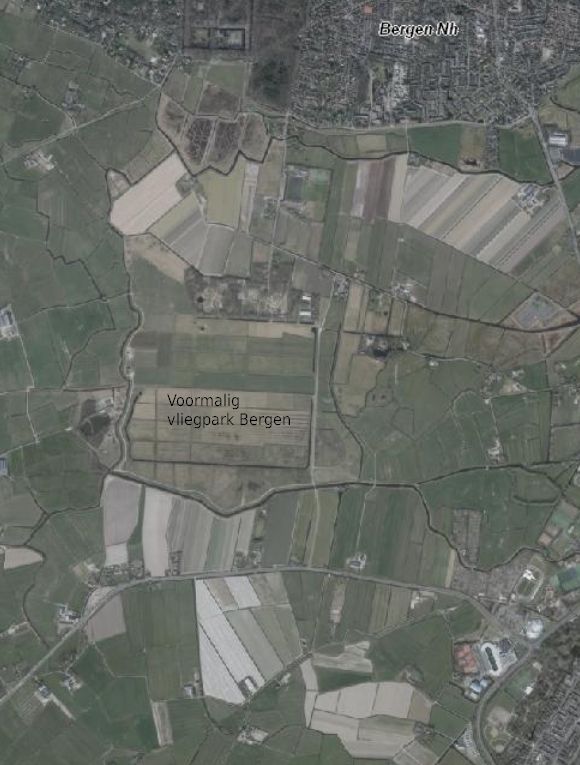The disastrous Bergen air park, home to the Fokker CX and G.1
Introduction
In this story we want to give an overview of the events at Bergen airfield in North Holland, around the May days of 1940. A relatively unknown airfield, nevertheless very important in that period.
It is a story of heroic deeds and stupidities. We do not pretend that this is the true story, in a war the truth is the first casualty. The sources we consulted therefore occasionally contradict each other. Research is still being done into what exactly happened on those fateful days in May 1940 at the Bergen airfield.
We regularly mention the names of those involved, to give them the credit they deserve.
Read and shudder!
Opening of the air park and arrival of the aircraft
On July 17, 1939, the LVA Bergen air park was established in North Holland1 opened. The new airport was part of the plan in 1936 by General Raaijmakers on behalf of then Prime Minister Colijn to create multiple locations for the distribution of Military Aviation. These airports were not allowed to be used in combination with civil air traffic. Although that did not work everywhere. Waalhaven Airport, for example, never became a fully military airport.
The first choice for Bergen airfield was a 155-hectare site near Bergen and construction of the airfield began in 1938 and was practically completed in May 1940.2
The airfield will be used for fighter planes and reconnaissance aircraft. The airfield Bergen has three platforms, with two hangars available per platform. Hangars 5 and 6 are assigned to the 4th JaVa. This makes platform 3 'the' platform where the G.1As will be positioned.
1 The fact that Bergen is referred to as an 'air park' probably has to do with the spacious layout of the airfield. There were four platforms, 6 hangars and a large detachment of maintenance personnel. The Fokker T,V would also be stationed at Bergen.
2 The remaining airfields will be Waalhaven, Ypenburg, although these airfields had to remain open to civilian traffic; and Nerhoven, near Gilze Rijen. Schiphol, as a national airport, therefore functioned as a 'mobilization center' where called-up personnel gathered and were provided with aircraft and equipment in order to then be assigned a base as a war unit.
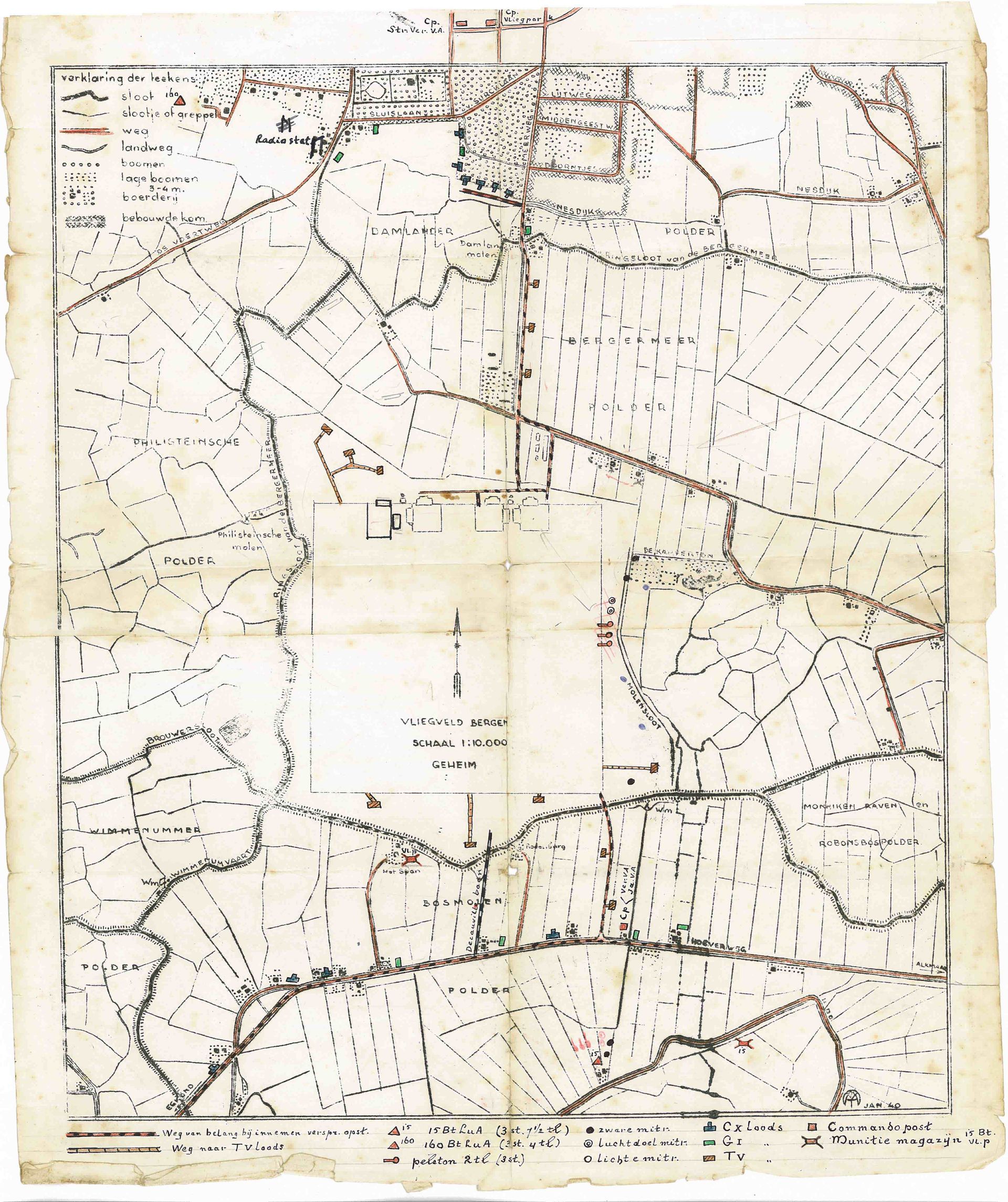
On that 17th of July fourteen Fokker CX reconnaissance aircraft arrived immediately as part of the Strategic Reconnaissance Aircraft Department (Strat.Ver.VA). This was finally possible, because initially the grass was too swampy for the heavy Fokker aircraft, but in the meantime the ground had improved considerably.
They are the 704, 705, 706, 707, 708, 709, 710, 711, 712, 713, 714, 715, 718 and the 719.
The 718 and 719 soon move to Hilversum sports airfield for the 2and Hunting Aircraft Division (JaVA).
This photo was of course taken from a Fokker CX, because these scouts have the possibility to take photographs. We see here that the construction of the platform is progressing rapidly. The construction of the hangars is also progressing steadily, after all four of them are ready for use.
The lower hangar is called No. 1, the two on the left next to each other are No. 2 and 3, and the large one (on top) is No. 4.
The bottom platform is called #1 and the platform at the top of the photo is called #2.
On platform 1 there are five G.1 aircraft at the top and three CX aircraft at the bottom. In the grass above there are another three CX aircraft.
The old Fokker CVD with registration 654 is used as a cuff tug for shooting exercises in flight.
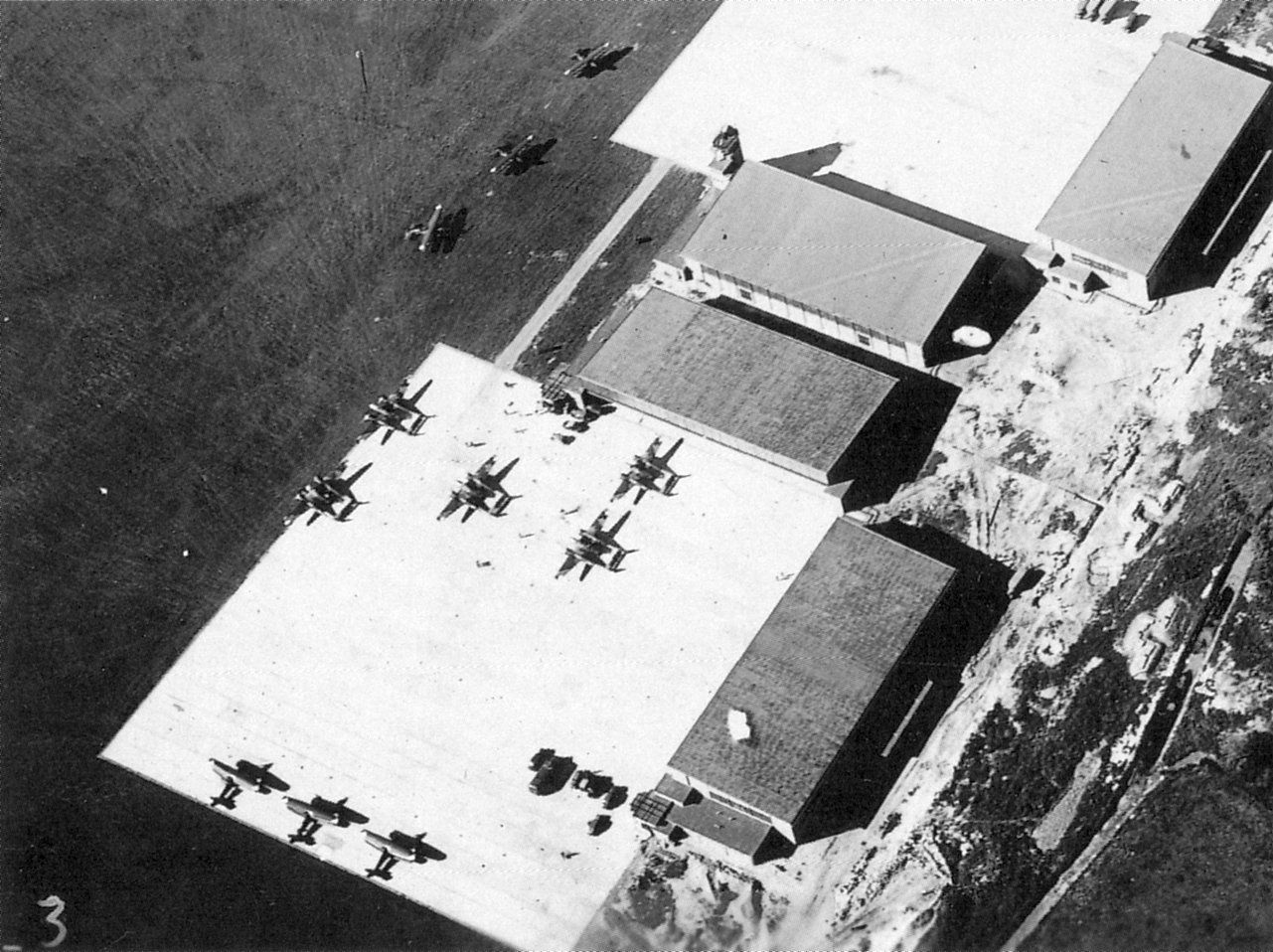
A recording was made of flying personnel of the 1st Strat.Ver.Va. and the 4th JaVA at Bergen airfield on 2 September 1939. It concerns pilots and observers mixed together in still peaceful days. They fly partly on the Fokker CX and partly on the Fokker G.1.
From left to right: 2nd Lieutenant-Observer Gerard Salomé, Derk de Koning, Peter Wildschut, Captain-Pilot T. Lamers [Cdt.], Krien Tacaris, 1st Lieutenant-Pilot Corstiaan de Wijs, 1st Lieutenant-Pilot Herman Dill, and P. IJsseling.
On the right in the background hangar 1 and on the left behind hangar 2 positioned on platform no. 1. (Photo family Salomé Amsterdam)
It is striking that the groundwork is already lagging behind. Behind hangars 1, 2, 3, and 4 there is still a lot to do.
A heavy price was paid for this later - in May 1940...
The 704, 707 and 710 are in the hangar for repair and maintenance on May 9, 1940.
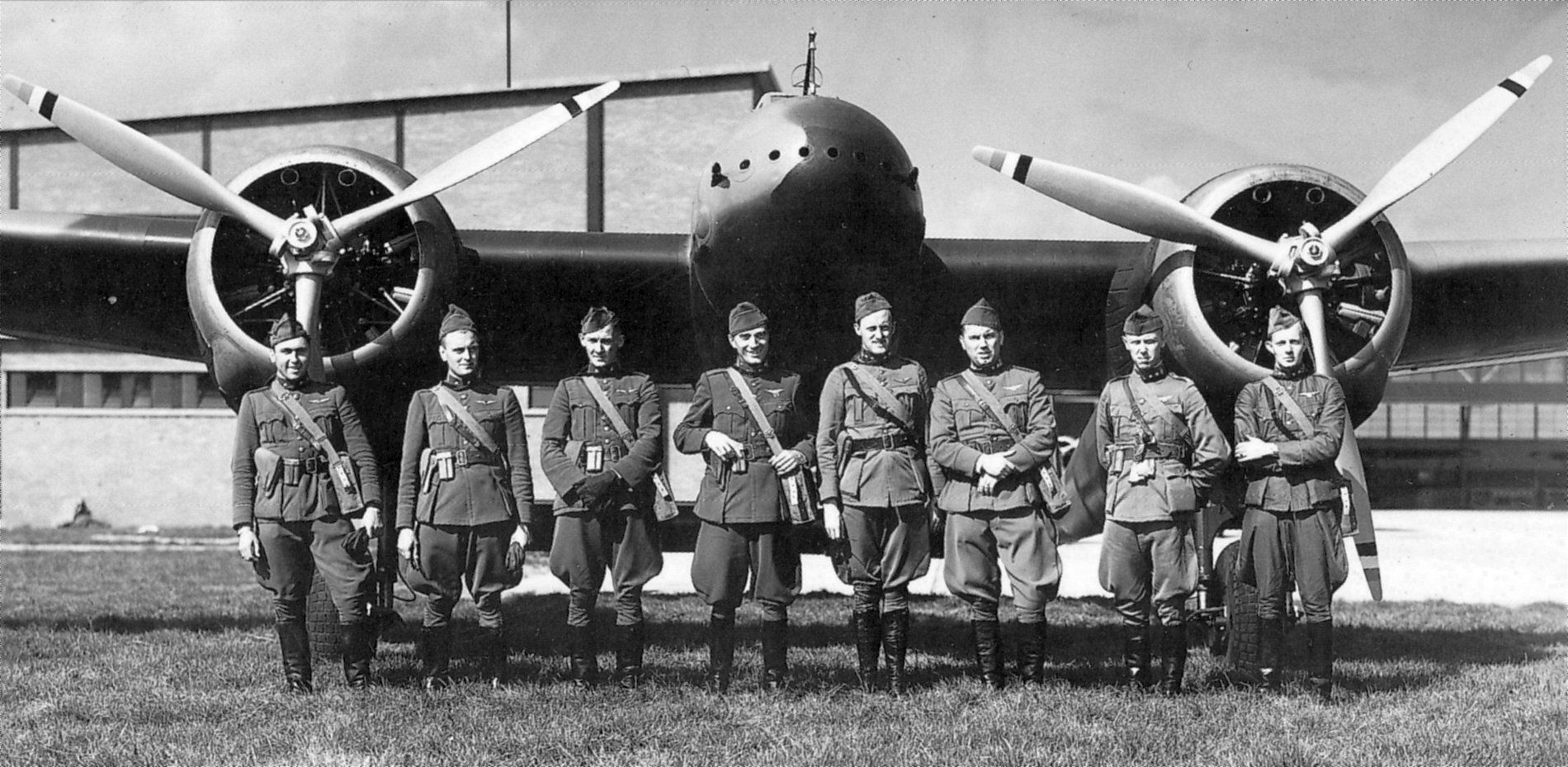
The new Fokker G.1a - also known as G.1 Mercury - fighter cruisers also arrive at Bergen Air Park in the second half of 1939, including the Fokker G.1 304 c/n 5525. It is delivered to the LVA on 8 July 1939. A reconnaissance dome under the hull is tested with the 304. [ Photo 03]
The location could provide for a second shooter, but LVA does not see much in it. However, the name 'Badkuip G.1' was used for a short time.
A part (almost half) of these fighter cruisers, including the 325, goes to the Rotterdam airport Waalhaven, under the command of Captain-Pilot. H. Scholtmeijer, and forms the 3and
JaVA. Eventually the 325 ends up at Bergen airfield
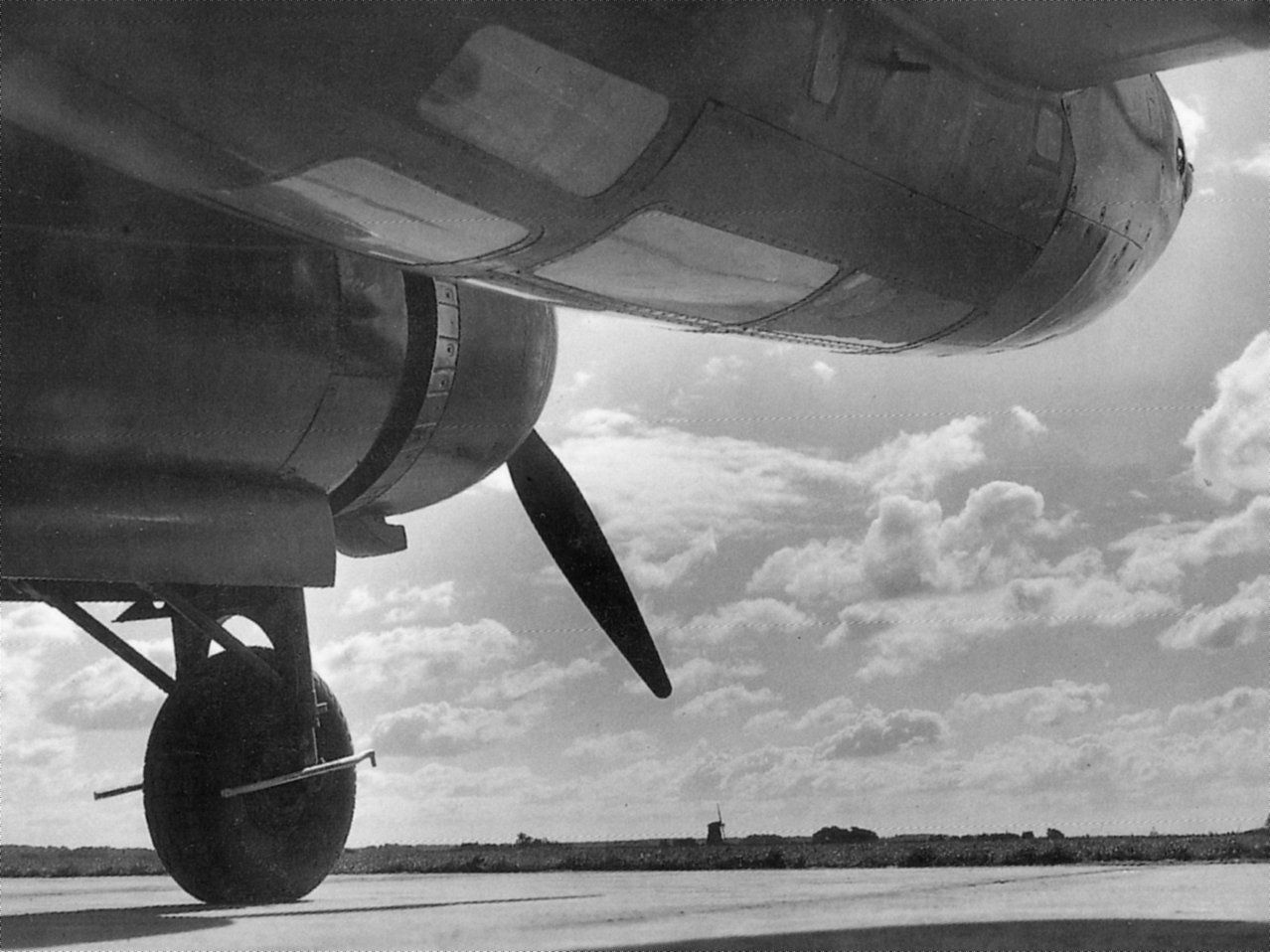
Here is the Fokker G.1A 325 that was originally assigned to the 3rd JaVA in Waalhaven Rotterdam. Due to damage to the air pressure firing device, it has to quickly divert to the north on 10 May 1940. After all, there was not much to fire with it. From there, the aircraft arrives via De Kooy near Den Helder at Bergen airfield for further repairs. Pilot 1st Lieutenant-Airman O.Thate and tail gunner Sergeant R. Coene then take over the 325.
The aircraft flew several more missions and ended its existence on May 14, 1940 in a fire on the Haagweg near Schiphol Airport.
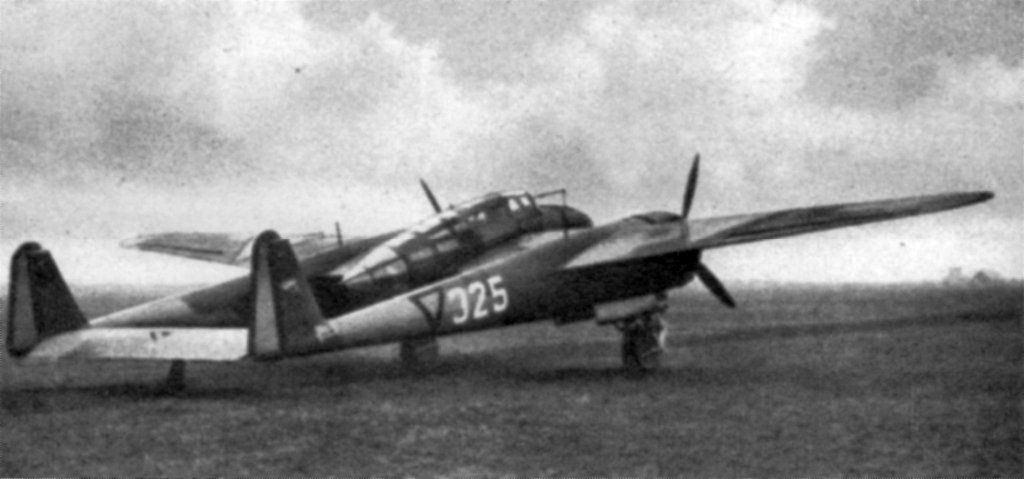
In the photo next to it are three G.1's of LVA at Bergen airfield. On the right the registration is not visible and in the middle is the 325. This aircraft is being worked on, this yacht cruiser is also being fueled by a modern tanker.
Finally, on the left we see the 317 that is temporarily outside for repairs. The pilot at that time is 1st Lieutenant-Pilot Thijssen.
All this takes place on platform 2 in front of hangar 4.
The remaining part (also almost half) of the yacht cruisers go to Bergen where the 4and
JaVA is established under the command of Captain-Aviator T. Lamers.
The rest of the G.1 aircraft will remain at Schiphol Amsterdam for the time being.

Probably the last photo of the Fokker G.1A 306 c/n 5527 in full regalia on January 6 on the grass of Bergen airfield. This G.1A is delivered to LVA on July 11, 1939.
January 6, 1940 is a bad day. Lieutenant-pilot A. van Ulsen and gunner Sergeant P. Lok are sent from Bergen to the area around Vianen.
There is said to be an unknown plane flying around there.
Around 12:30 at 4,000 meters altitude with very poor visibility they approach an LVA plane. The distance is then only 400 meters. It is the D.XXI 234 of the 1st Lieutenant-Flyer O. Thate.
What follows is a very interesting story which can be found here:
mid air collision.
The story does not end well for the G.1A.
The D.XXI makes off and lands again at Soesterberg airfield.
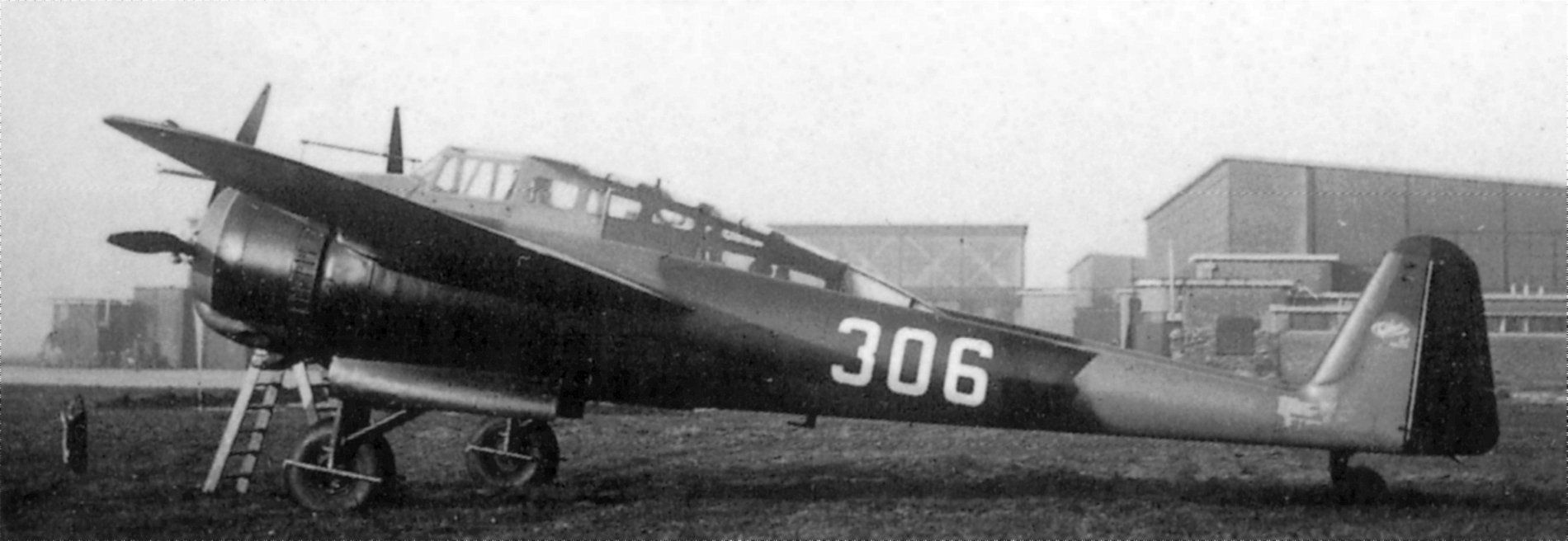
MAY 9, 1940, the G.1's on a silver platter
A duty roster is used that has been adjusted on the orders of the Air Defence Command. On 7 May 1940, all leaves are cancelled and Soesterberg airfield is evacuated. Three G.1As – including the 300 and the 318 – are flown to Bergen. G.1As are also transferred from Schiphol and taken back into maintenance at Bergen. At that time, the airfield has twelve deployable G.1As at its disposal, and two G.1As under maintenance, namely the 313 and the 317.
A drawing by J. Broos provides a nice overview of the position of the G.1 fighter cruisers of the 4th JaVA on May 10, 1940.
The leadership of the 4th JaVA decided a few days before 10 May to move the entire G.1 group. An unimaginable decision in every respect, so shortly before the start of the fighting. The reason given by the commander for this rather remarkable decision was that he decided against a dispersed position, instead he ordered the aircraft to be lined up here. Assuming that the pilots still had five minutes to take off, since the German aircraft would come from the east. A few pilots still advocated a dispersed position with planks under the wheels of the heavy G.1As to prevent them from sinking, because the airfield has a very damp and still young grass surface. Due to the muddy conditions, the G.1s were not positioned around the platforms, but on the large platform. But it was to no avail.
The position is now as follows: left hangar no. 5. In the foreground the roof edge of hangar no. 6 and platform no. 3 are still visible. In the evening of 9 to 10 May the 301, 304, 305, 308, 310, 318, 321, 322, 325, 331, 332 and the 333 are lined up in 4 rows with 3 aircraft next to each other.
The aircraft could not be presented more beautifully and clearly. The arrangement is a true invitation to the enemy attackers. The German Heinkel 111 and Junkers Ju88 aircraft know exactly what to do with the beautifully lined presentation of the G.1A's.
The CX, on the other hand, are camouflaged and therefore not visible to the Germans.
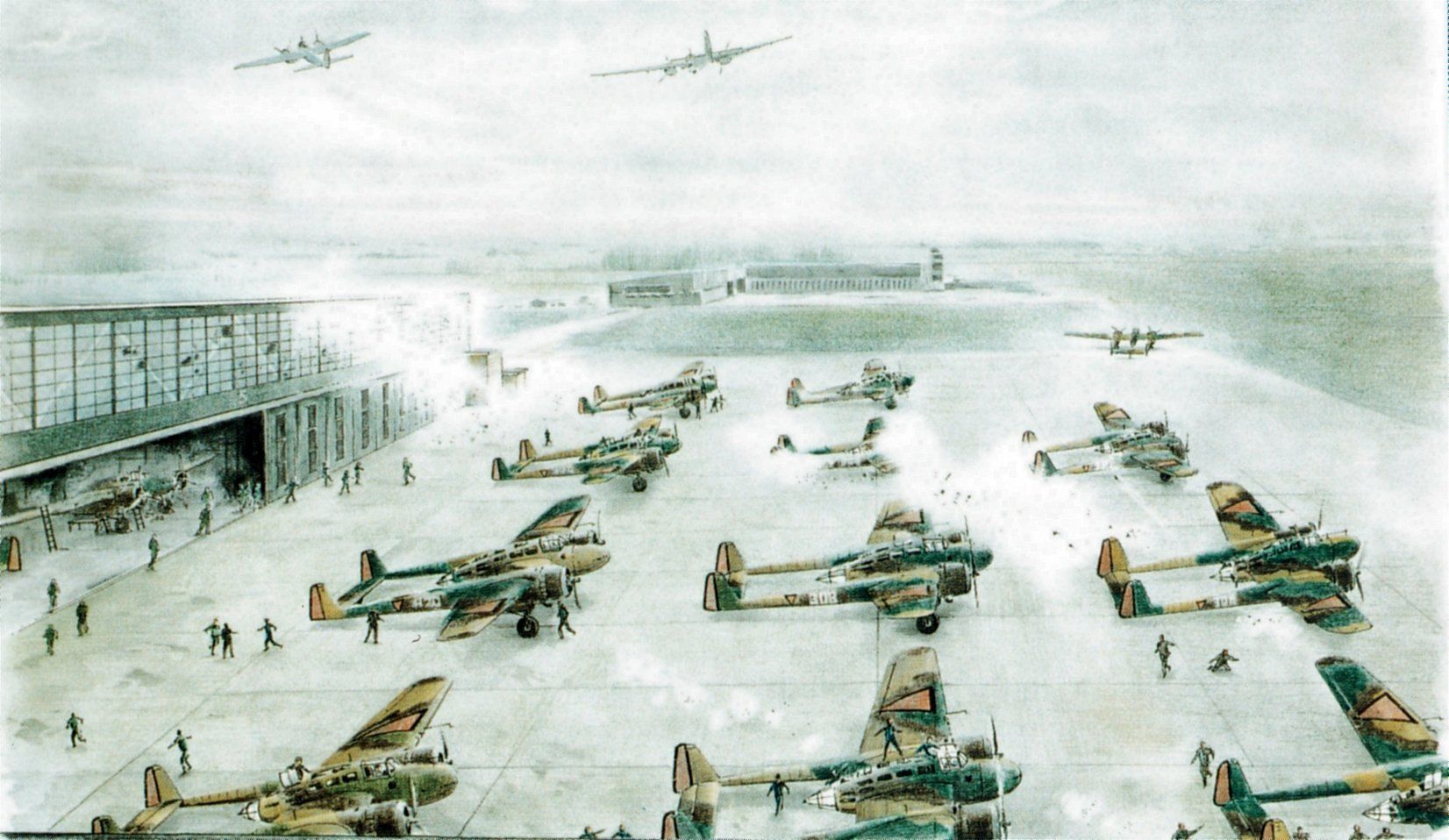
The attack is coming
On May 10, 1940, the Fokker G.1As were distributed as follows:
-At the 3rd JaVA in Waalhaven eleven aircraft were ready for combat: the 302,309, 311, 315, 319, 328, 329, 330, 334, 335. Not ready were the 312, 314 and 316;
-The 4th Java in Bergen had twelve aircraft ready for combat: 301, 304, 305, 308, 310, 318, 321, 322, 325, 331, 332 and 333. Not ready: 300, 313 and 317;
-At Texel Flight School: the 307;
-Under repair at Fokker: 303 (ready), 323 and 327;
-The whereabouts of aircraft 320, 324 and 326 are unknown, but they were probably depot aircraft.
On that day, German activity is already noticeable around 02:30. Unknown aircraft can be heard at high altitude.
Alarm on May 10, 1940 at the not yet fully camouflaged 318 next to a platform at Bergen Air Park.
LVA members in uniform, borrowed KLM mechanics and Fokker mechanics in overalls run away from the yacht cruiser,
On the left one of the LVA members with his helmet in his hand, without too much haste and a white cloth attached to his belt...well...
In the foreground Sergeant W. Heeres looks to the right and thinks what he thinks.
A sergeant can be recognized by a large yellow V-shaped stripe at the bottom of his sleeve. This sergeant was also active as a tail gunner in the G.1A.

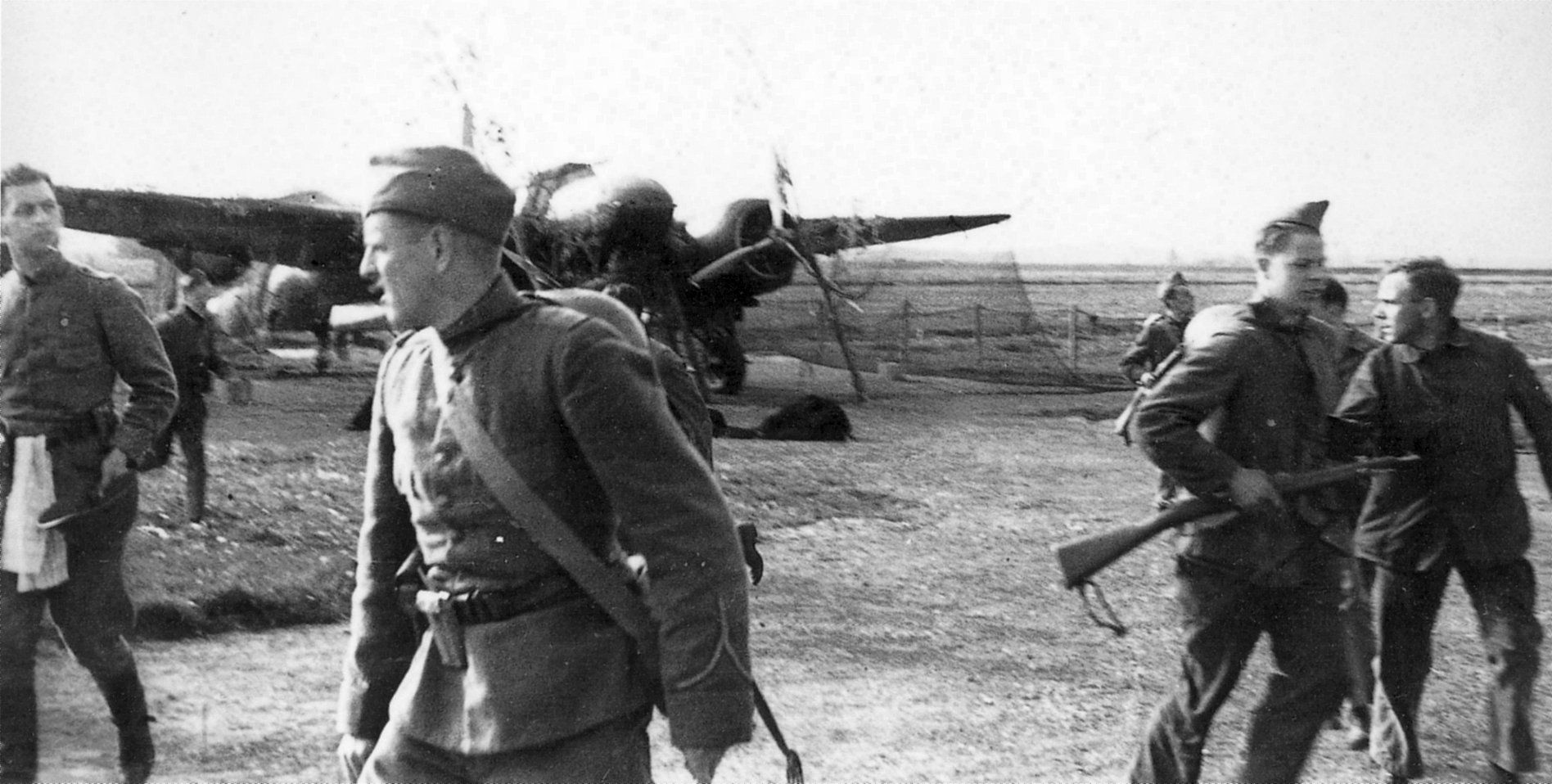
What many pilots had already warned about seemed to be about to happen.
From 03:00 in the morning the Air Watch Service reports the massive border crossing of German aircraft. At Bergen the engines are warmed up around 03:00 and the G.1s will then take off from 03:50, including the 304 with 1st Lieutenant-Flyer O. Thate and gunner Sergeant R. Coene. The principle is used at the 4th JaVA that every pilot has his own fixed aircraft.
Just around that time, the Germans begin their bombardment with, among other things, the Junkers 88 aircraft. However, the attack does not come from the eastern side as expected, because the Germans have come up with a different tactic. They do fly above Dutch airspace, but then fly on to the west as if they have another target area in mind, namely England. However, above the North Sea, the aircraft unexpectedly turn around and the Dutch air parks are attacked from the west. The supposed five minutes are no longer an issue. There are at most one or two minutes between the observations and the bombardments.
Another drawing by J. Broos shows the aArrival of the first Heinkels above Bergen around 04:00 on 10 May 1940. At the bottom, the 321 is busy breaking away from the group.
The code 5J before the swastika indicates that this is Kampfgeschwäder 4. The Staffel is indicated behind the swastika.
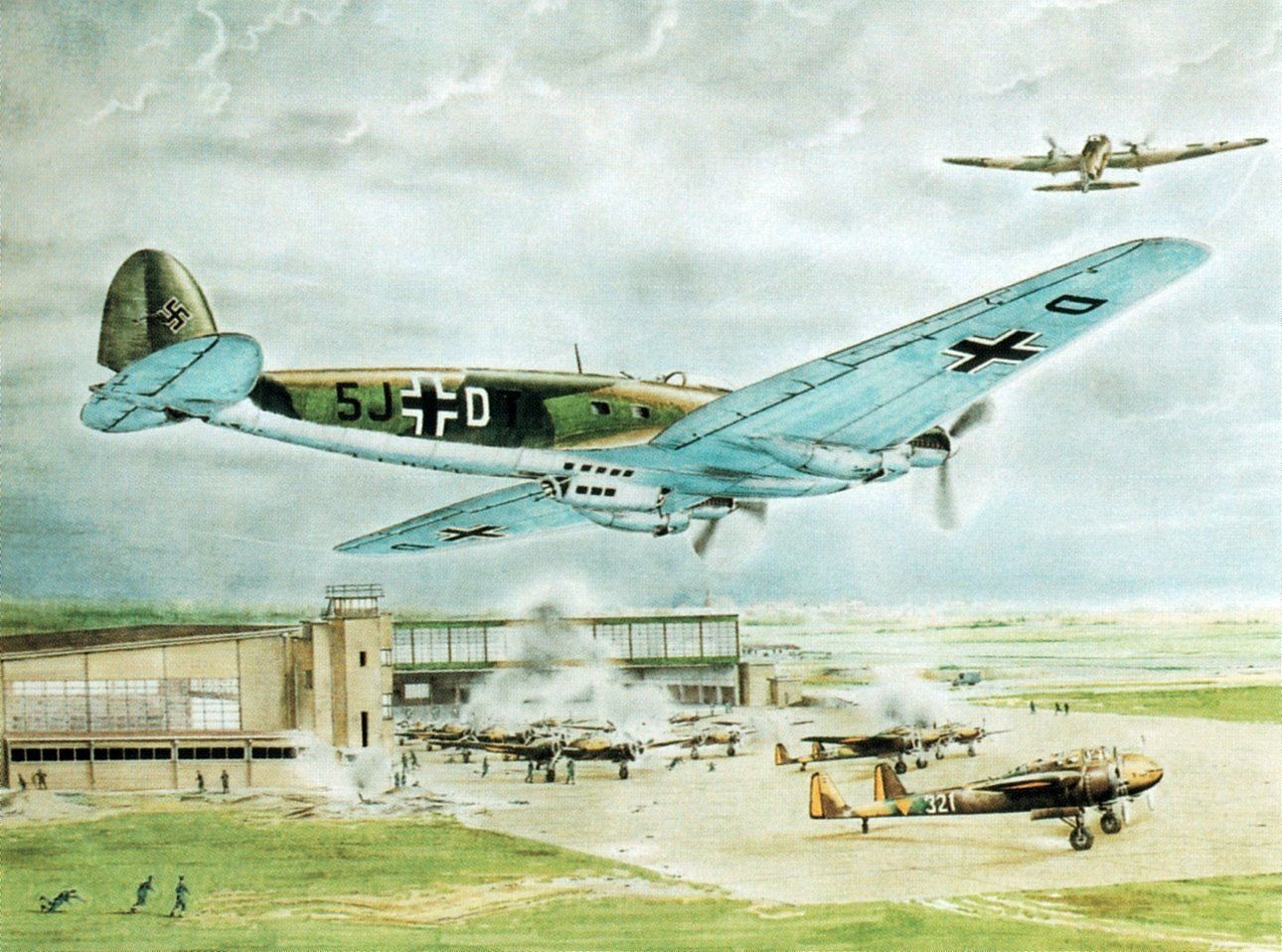
Beautifully drawn overview by Broos of the layout of the G.1A fighter cruisers at Bergen Air Park.
No fewer than twelve G.1A aircraft are ready, some with engines running.
The 321, flown by 1st Lieutenant-Pilot J. Thijssen and gunner Sergeant K. Vermaat, begins a gigantic journey...
On the large platform, in front of hangar 5 and 6 on row 1 on the left, is the 321 of pilot 1andLieutenant-Pilot J. Thijssen and tail gunner Sergeant. K. Vermaat. They don't waste any time and around 04:00, during the bombardment, they are the first to take off with their G.1 321 for a long series of reconnaissance and attacks.
At Halfweg Thijssen and Vermaat capture their first German bomber.
Later they encounter fourteen Messerschmitt Bf 109 fighter planes. The 321 is damaged, but it still ends reasonably well.
Three Junkers Ju 52s are shot down near Katwijk.
Then the 321 returns to Bergen via Ypenburg, because the ammunition and fuel are running out. There the 321 lands at 06:20, while the Germans are already bombing again.
So a tough mission of two hours and thirty minutes.
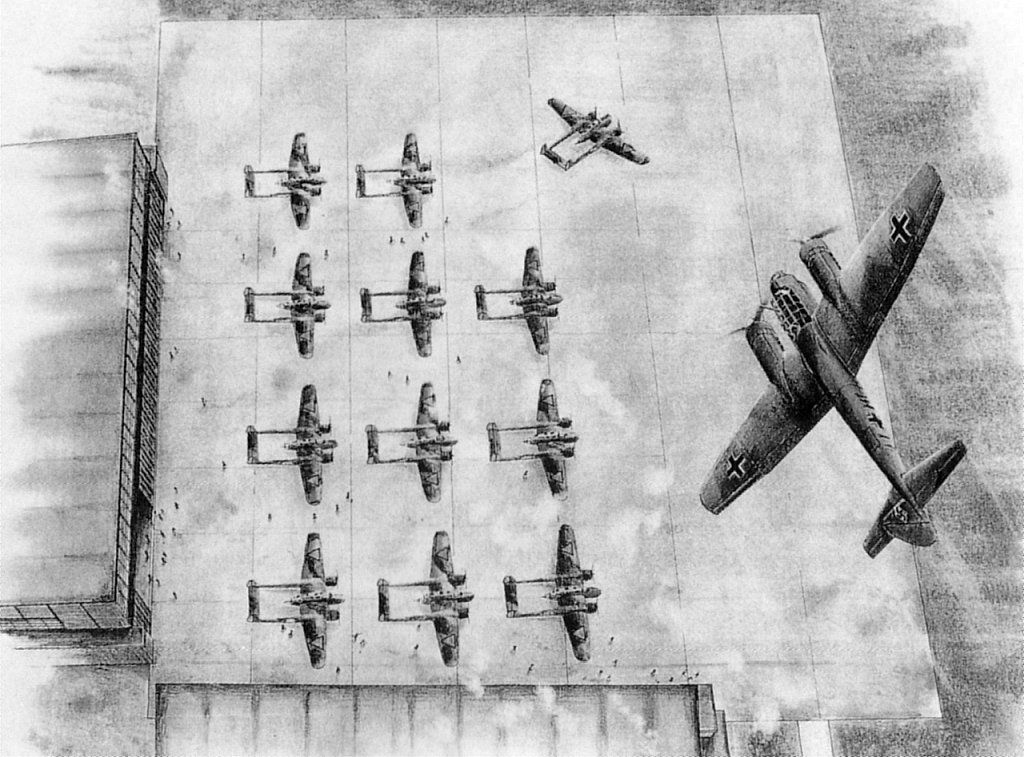
Chaos in Bergen
On the platform, second from the right in the first row, is Sergeant-Pilot A. Bosman with tail gunner Sergeant. R. Coene with their 305.
When Bosman accelerates to take off, he gets a direct hit on the left engine. The power of the right engine makes him turn to the left.
There the 305 comes to a standstill, nose to nose with the 331 of 1st Lieutenant.Vl. H. Dill with tail gunner Sergeant. J. Van den Breemer.
Bosman leaves his plane, but Captain Lamers does not hesitate for a moment to climb into the 305 to switch off the engine.
The 331 flown by Pilot Sergeant-Pilot A. Bosman and tail gunner Sergeant R. Coene therefore makes a half turn on platform 3 at take-off.
The cruiser remains behind on the platform and is very badly damaged. The aircraft is no longer able to start.
The 331 c/n 5552 was delivered to the LVA on September 22, 1939 and assigned to the 4th JaVA in Bergen.
In this photo the registration is still clearly legible as well as the Fokker G.1A designation on the tail surfaces.
Furthermore, it is clear that this device can be considered written off.

As can be seen in the next photo: the badly damaged and therefore disabled 331 has platform no. 3
never leave flying again.
Left hangar no. 6 and right hangar no. 5 with how attentive one of the fleet trucks. They take care of the removal of the 331 fighter cruiser. Soon the remains will be on the aircraft graveyard at the edge of the platform.
On the far left is previously supplied material to better drain the much too soft and wet grass layer. It must be said: the beautiful Bergen airfield was constantly short of time to finish everything properly.
Finally, on the left is the 310 that Bosman and Coene will take over later. First, a right propeller and a new left front wheel have to be installed.
The 310th will remain active until May 13, 1940.
2andLieutenant Pilot A. van Ulsen remains on the platform because his mechanic was injured and therefore cannot start the engine.
1andLieutenant-Pilot. T. Leegstra also does not get into the air, because Private-mechanic E. Dijkstra is seriously injured.
Behind the already mentioned 321 is the 304 with pilot 1andLieutenant-Flyer O. Thate and gunner Sergeant R. Coene with engines running. However, it does not take off. Although the engines are already running, Thate gets out and for some unknown reason walks off the platform. His gunner, Coene, does not understand why they are not taking off. He goes forward and finds an empty cockpit.
Thate will later state that he thought he had turned off the engines. With this strange and inexplicable action he also blocks the 318 that is behind it. This only increases the chaos on that first day of war in Bergen.
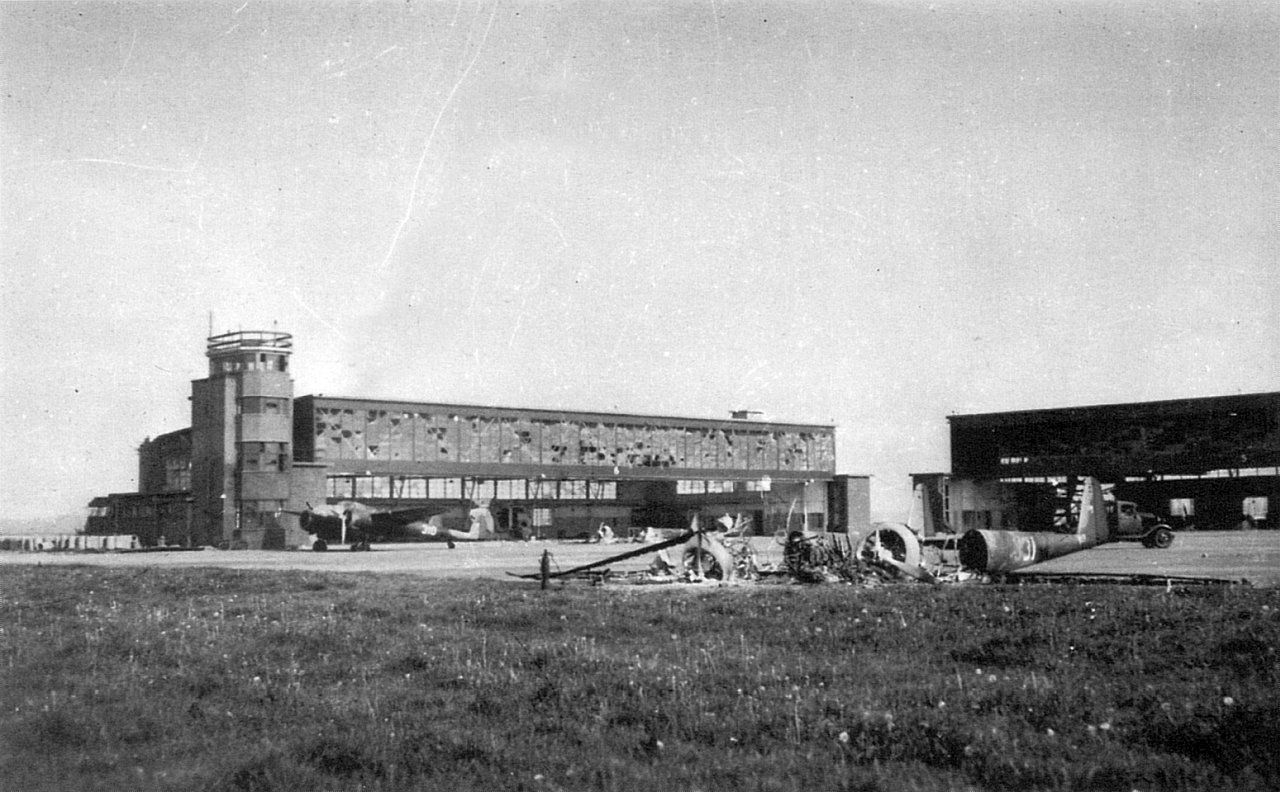
This special photo was taken on May 10 at 07:00 on platform 5 of Bergen Air Park. Here are some of the badly hit Fokker G.1 aircraft.
On the platform there is a lot of material from those stricken fighter cruisers. The 318 is here half locked behind the 304 of Vlieger Thate who has disappeared at that moment. An action that contributes greatly to the chaos and the possibilities to taxi away.
The 318 c/n 5539, entered service on 1 November 1939, has heavy damage to the upper side of the right wing and damage to the right tailplane.
Until May 13, 1940, after a quick repair, the 318 was very active together with the 321, four CX reconnaissance aircraft and five D.XXI fighters.
On May 13, the 318 finally crashed.
The tail gunner Coene finds two days later 1and Lieutenant-Pilot Thate back in the village of Bergen. Apparently he manages to persuade his pilot to return to the air park.
On May 11, 1940, the fighter cruiser 304 burned down after another German attack.
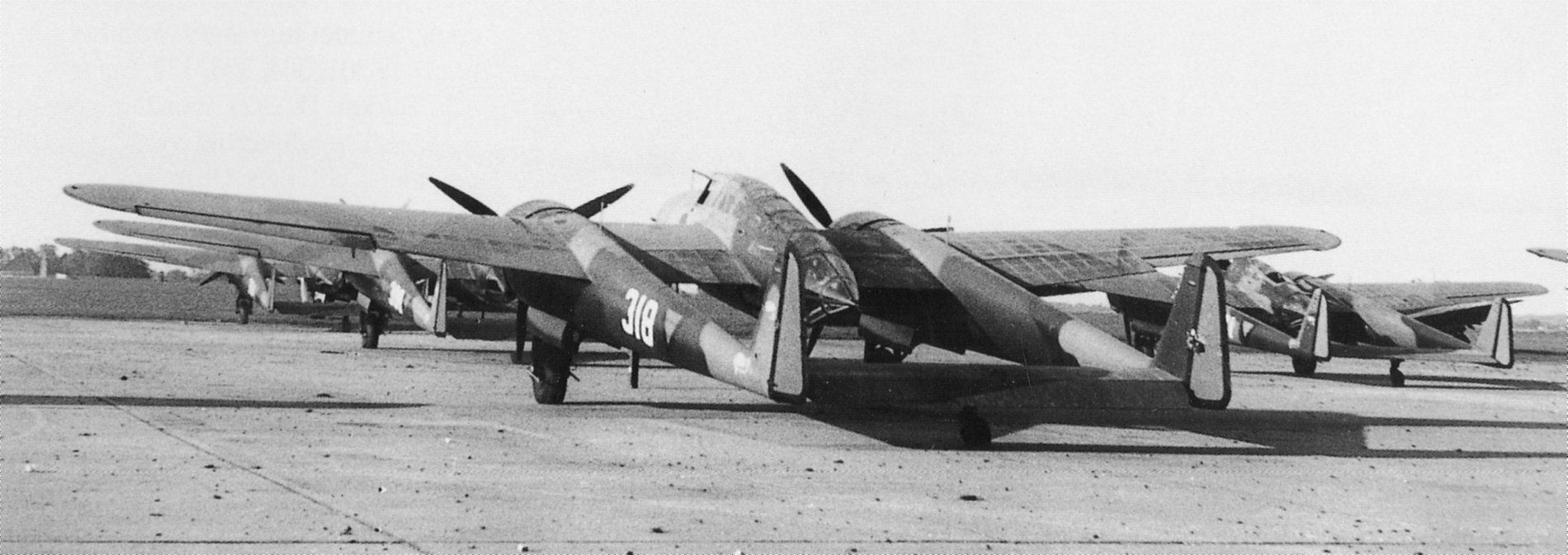
The Fokker G.1 fighter cruiser 333 c/n 5554 was delivered to the LVA 4th JaVA on October 17, 1939. Already on May 10, 1940 around 03:30 hrs, positioned in the rear row, a direct hit caused its end.
Around a week after the capitulation to the Germans, this is the final end. The ex-333 is still recognizable by its tail booms and there is also a whole collection of aircraft scrap.
Ripe for souvenir hunters, see their beautiful bicycles (at that time most bicycles were still in Dutch ownership).
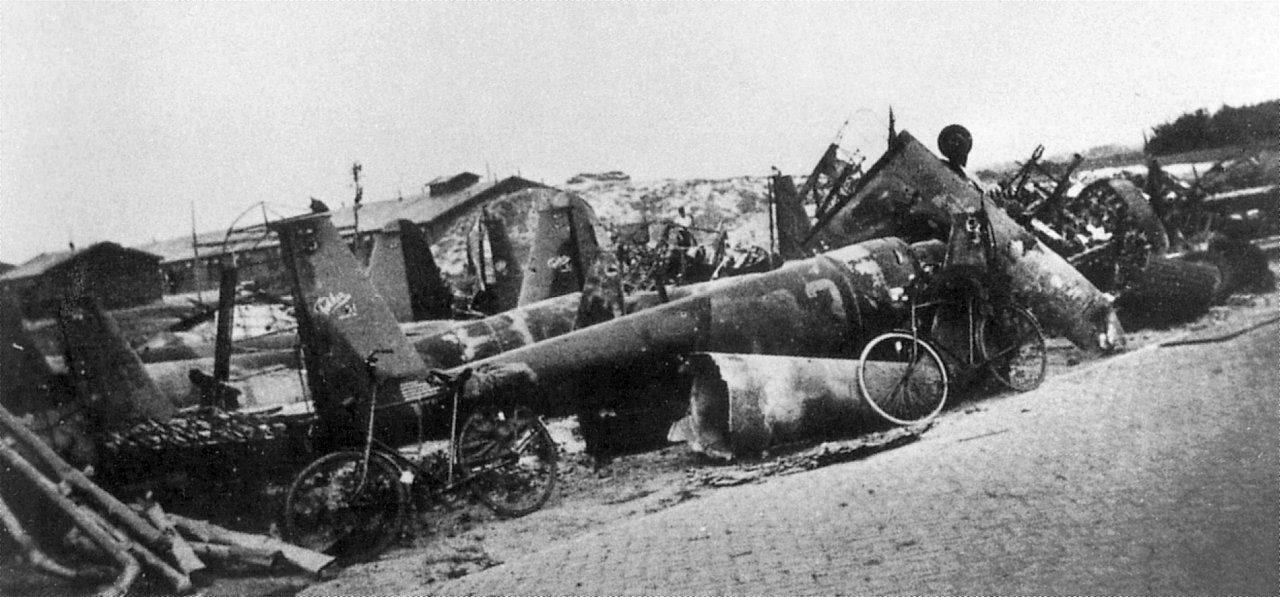
On the left, the 333 shortly after the first German bombardment on May 10, 1940. The fighter cruiser is still in front of hangar no. 6.
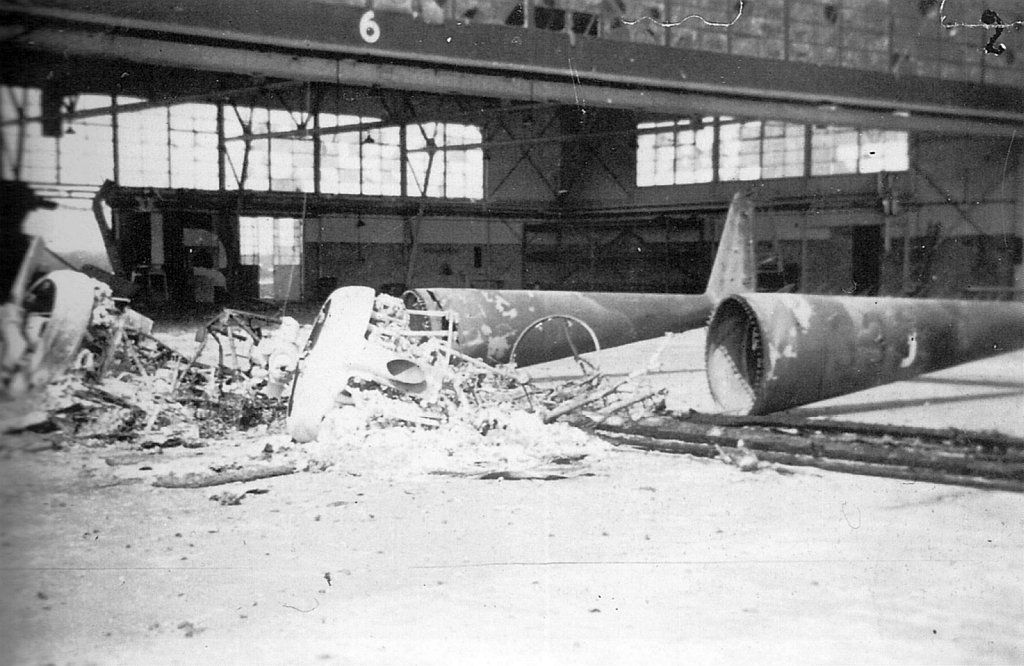
Above: The same situation with the 333, but now a bit closer to illustrate the great devastation. The large hoop shape on the right is part of the tail turret. On the left, part of the cockpit windows.
What remains behind in Bergen is chaos with many wounded and dead and a fortune in modern but broken aircraft.
It will take a lot of repairs and especially time to get everything in order.
The condition of the equipment and the morale of the personnel have taken a serious hit.
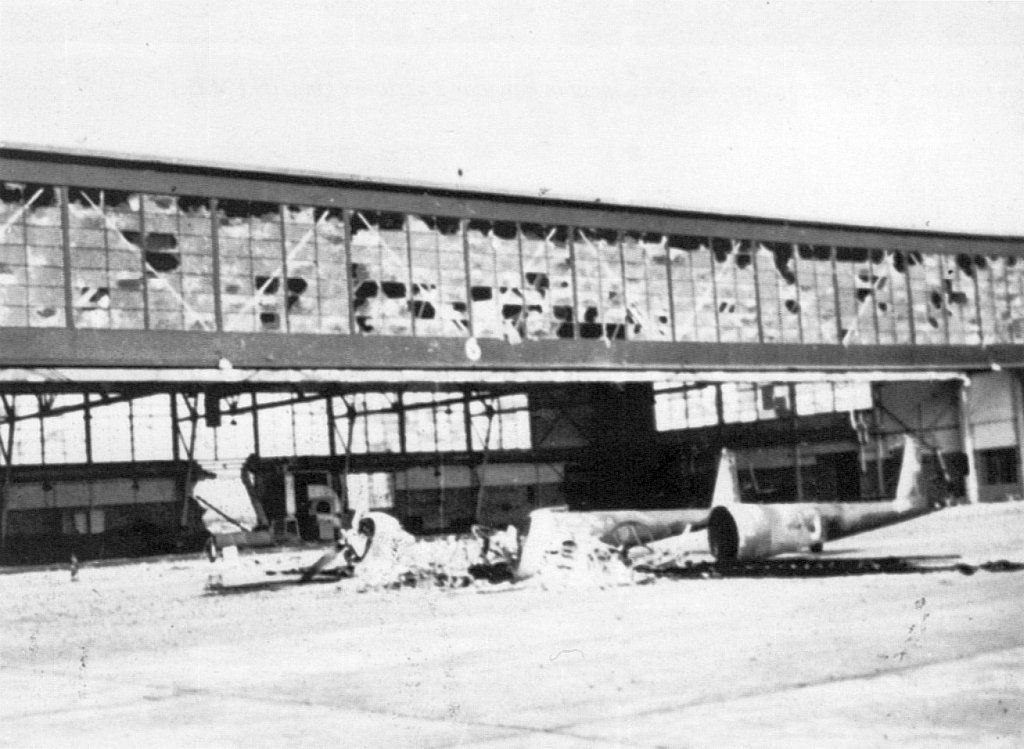
The bombing continues
This was followed, still on May 10, by a second and third German bombardment, which forced a number of pilots, tail gunners and mechanics to temporarily flee to a shelter between hangars 5 and 6.
Kite 2and Lieutenant Pilot F. Peetoom is not with his plane and tail gunner P. Lok cannot open the box.
The 303 that was under repair at Fokker Schiphol is being made ready for flight. At 15:30 the aircraft is flown by KLM pilot K. Parmentier from Schiphol to emergency airfield Buiksloot (Amsterdam Noord) where it arrives at around 16:00.
This airfield had not yet been discovered by the Germans.
At 18:05 the 303 departs, now flown by 1and Lieutenant-Pilot. H. Dill and tail gunner Sergeant J. van de Breemer. Around 18:30 they land at Bergen.
The 315 of the 3and JaVA at Waalhaven, can no longer land there due to bomb damage.
Flown by 1and Lieutenant Pilot A. van Oorschot and tail gunner Sergeant W. Wesly divert the fighter cruiser to De Kooy near Den Helder and then continue to Bergen, where the aircraft arrives at 19:30.
The 315 will be at the 4 in the coming daysandKeep flying JaVA. An asset.
It is one of the few bright spots on this day.
May 11, 1940, an interim report
Time for an interim report at the start of the new day.
Of the deployed G.1 hunting cruisers there are:
- Five slightly damaged and positioned around the field: the 304, 305, 308, 310, 318, 321, 322, 325, and the 332;
- Damaged on the platform: 310;
- Destroyed: 331 (at 6.40) and 333 (at 04.00);
- Destroyed in hangar: 313 and 317 (both under repair and not operational);
- Undamaged: 301 and 318
The 308, seen in this drawing, also has damage from the various German attacks, although due to its position in the first row the aircraft comes off reasonably well at Bergen. One of the engines in particular gave major problems on this 10th of May.
On May 11 at 10:00 hrs, the 308th already managed to move to Schiphol, flown by 2nd Lieutenant-Pilot B. Sandberg and gunner Sergeant J. van den Breemer.
Later that day at 18:35 hrs the 325 also follows to Schiphol airport, flown by 1st Lieutenant-Pilot T. Leegstra and an unknown gunner.
The 305 was slightly damaged, seven fighter cruisers were badly damaged: the 301, 304, 331, 332, 333 and 334.
The 331 and 333 lie disabled on the platform. The 313 and 317 lie destroyed in hangar 5.
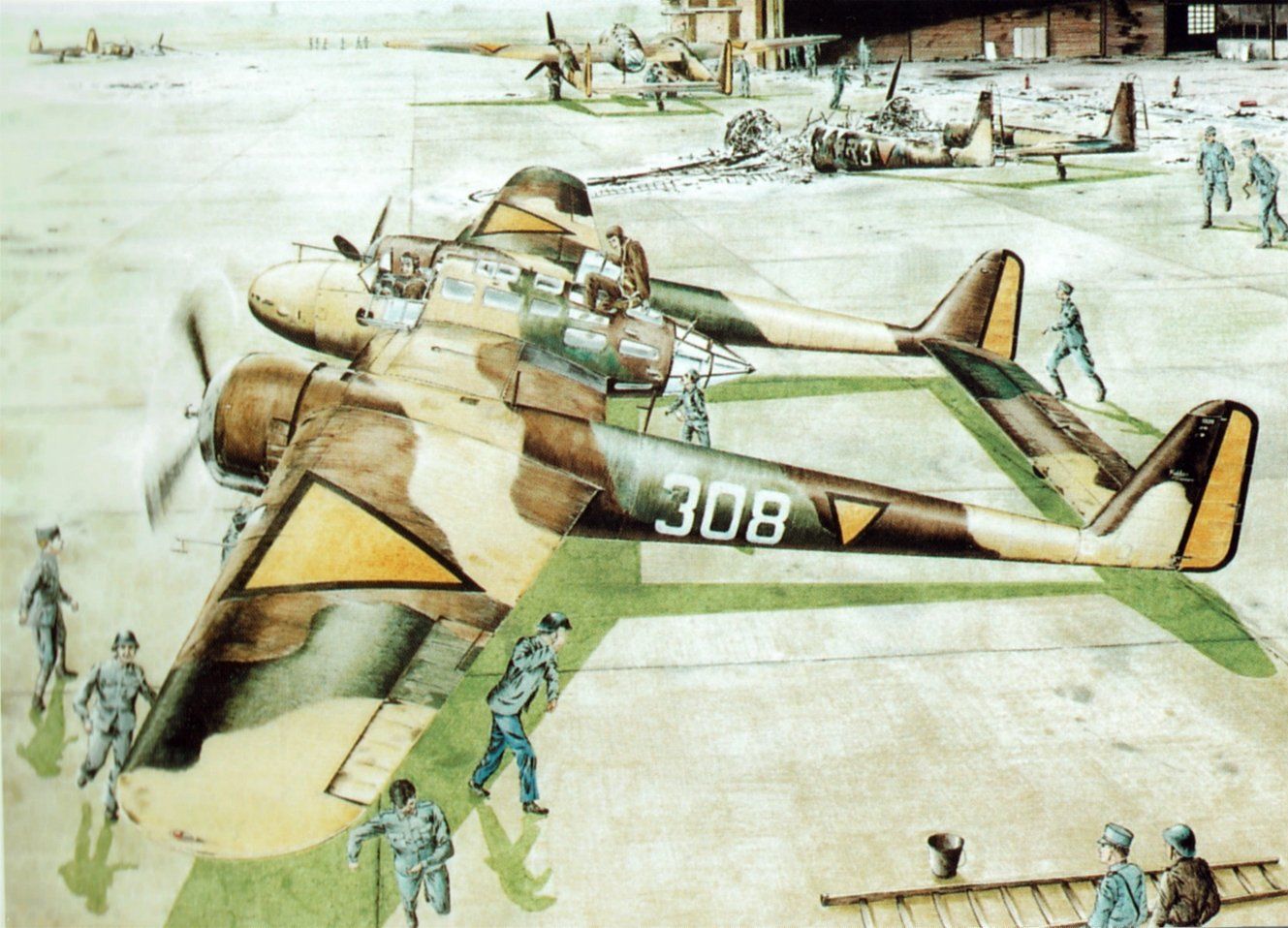
A photo that a not offers an overly cheerful view of hangar no. 5 of Bergen Air Park on May 10, 1940, where the two G.1A fighter cruisers are located.
The German bombardment has clearly not missed its mark. There is absolutely no question of a possible recovery. In front lie the remains of the 317, behind them the remains of the 313.
(The 313 c/n 5534 was delivered to LVA on 17 July 1939; the 317 c/n 5538 was delivered to LVA on 18 August 1939.)
The mechanics have managed to restore the 301, 304, 305 and 332 with great dedication. However, for the time being these aircraft disappear as dummies to the edges of the air park.

The battle continues
At 08:45 the Germans appear above Bergen again and attack, among others, the 301, 304, 305 and 322.
Shortly afterwards at nine o'clock the 325 depart with 1andLieutenant Pilot O. Thate and Sergeant R. Coene and the 303 with 2and Lieutenant-Aviator P.Schoute and Sergeant P.Lok towards Muiden-Vianen and WaalhavenLater analyses, however, show that these are numbers 332 and 304 respectively, the fixed-line aircraft of Thate and Schoute.
Several Junkers are shot at there and at ten o'clock they are back in Bergen.
The 308 and 322 have been repaired in the meantime.
Eight fighter cruisers are now ready for combat and are therefore urgently needed at Schiphol.
So various transfers from Bergen air park to the airport are taking place at a rapid pace
Schiphol to become part of the 4th Detachment under the command of Lieutenant Dill:
- The 308 at 10:00 with Kite 2andLieutenant Pilot B. Sandberg and gunner Sergeant J. Van den Breemer.
- The 303 at 11:10 with Kite 1andLieutenant Pilot A. van Oorschot and Gunner Sergeant W. Wesly. Because Van Oorschot's own aircraft (the 315) seemed to have problems upon departure;
- The 322 at 11:30 hrs with Pilot Sergeant-Pilot H. Hartkoren and Gunner Sergeant W. Heeres.
- At 18.35 another G.1, the 325, leaves Bergen and arrives at Schiphol at 18.50. The aircraft was flown by 1andLieutenant Pilot T.Leegstra, accompanied by a Fokker mechanic.
At 4:00 PM two G.1 fighter cruisers leave for the northern edge of Rotterdam.
The 303 with Van Oorschot and Wesly and the 322 with Hartkoren and Heeres.
They engaged many German aircraft while shooting, with good results.
During the afternoon the airfield was attacked again. Three of the repaired aircraft that were being prepared for a flight to Schiphol – the 301, 315, and the 332 were badly damaged.
Schiphol Detachment
At Schiphol, the 'Schiphol detachment' is created, for which the 303, 308, 322 and 325 from Bergen are available. In this way, forces are bundled.
The pilots are Hartkoren, Leegstra, Van Oorschot and Sandberg. And the telegraphists/shooters Van den Breemer, Heeres, Lok, Sonneveld and Wesly and in addition seven mechanics.
A whole series of missions were flown from Schiphol until May 14, 1940
May 12, 1940
Only the 325 appears to be ready to fly and with Pilot Sandberg and Tail Gunner Van den Breemer the mission leaves Schiphol for Middenmeer (Wieringermeer) at 05:50.
From there the plane flies together with two old CV scouts (the 594 and the 612) to the Wonsstelling in Friesland. From there they fly back together to Middenmeer. This mission is a complete success.
At 07:30 the 325 first goes to MLD Vliegkamp De Kooy. Arrival 07:45.
Together with the Fokker D.XXI 219, the escort goes to the Buiksloot emergency airfield.
Arrival of the 325, a G.1 with a very good radio installation
1at 08:00 am at Schiphol.
The 303 flown by pilot Van Oorschot with tail gunner Sonneveld, the 322 flown by pilot Hartkoren with tail gunner Lok, and the 325 flown by pilot Sandberg and tail gunner Van den Breemer will take off from Schiphol at 15:35.
The aim is to attack the area around Rotterdam together with four CX scouts from Bergen.
However, the CX aircraft from Bergen are not at the rendezvous point and the three G.1s are back at Schiphol at 4:30 PM.
At 16:45 the three G.1 fighter cruisers are already airborne again, the 325 is now manned by Leegstra (a Fokker pilot) and Wesly, the 303 with Van Oorschot and Sonneveld, and the 322 with Hartkoren and Lok.
The mission is towards Wageningen to provide air support to the Dutch ground troops on the Grebbe Line, who are engaged in heavy fighting with the German troops there.
The 322 receives hits in the fuel tanks and flies to Soesterberg where the plane arrives at 18:30.
The 303 and 325 also do not make it back to Schiphol and also land at Soesterberg.
Only the 322 with Leegstra2 and Wesly still manages to fly to Schiphol where the plane arrives at 7:00 PM.
The 303 of the 3andJaVA at Waalhaven and later added to the 4andJaVA in Bergen is run by 1and Lieutenant Pilot A. Van Oorschot and Sergeant W.Wesly flew back to Schiphol from Soesterberg at 07:35.
There the 3andand 4andJaVA merged into Detachment Schiphol.
This 303 was finally written off on May 14, 1940.
1 The fact that the radio installation is mentioned here already indicates how scarce radios were. This made coordination with and between the aircraft very difficult.
2 Leegstra would later manage to escape to England with a G1B.Click here for the story.
May 13, 1940
On 13 May 1940, four more G.1s were made ready to fly by the top mechanics and technicians at Bergen. They are the 304, 305, 310, 318 and the battered 321 is also back in order.
At 03:50 the 325, which had landed at Soesterberg due to a lack of fuel, departed for Schiphol with Hartkoren and Sonneveld as crew.
At 04:00 hrs the 321 departs from Bergen with 2andLieutenant-Pilot A. van Ulsen and Sergeant K. Vermaat and the 318 with 2andLieutenant-Pilot F. Peetoom and Sergeant G. Govers.
They are escorting five Fokker D.XXI fighters from Buiksloot emergency airfield in Amsterdam Noord and four Fokker CX reconnaissance aircraft, also from Bergen. The course is northeast, on the way to Wageningen. They will come into action on the Grebbeberg against the German positions that are stationed there
In Wageningen all bombs and ammunition are released on the advancing Germans.
A successful action can be said. The downside is that both G.1's return so badly damaged that they will no longer be deployable.
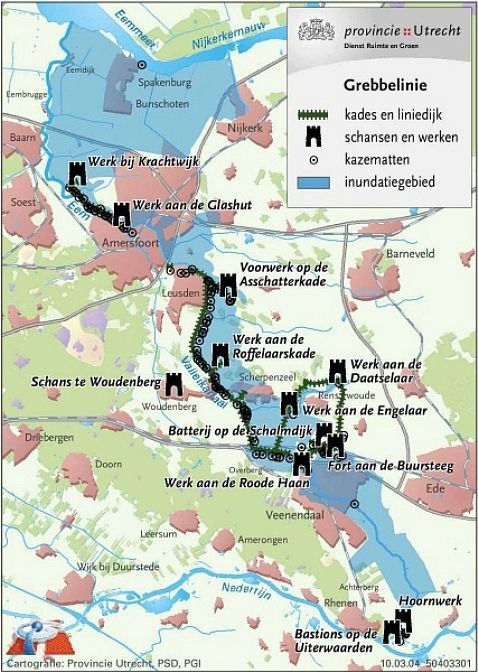
The fighter cruiser 321 returns quite damaged as can be seen in the photo. The aircraft is parked next to the platform, waiting for repair.
When the Germans arrive, the LVA personnel push the 321 halfway into the water.
At 04:15 hrs the 305 with pilot A. Bosman and tail gunner R. Coene departs from Bergen, together with the now repaired 304 flown by pilot P. Schoute and tail gunner H. Lindner.
The destination is Schiphol to fly from there to the Moerdijk bridges together with a Fokker TV bomber.
The 304 lands at Schiphol around 17:00. However, the 305 cannot extend part of its landing gear. Bosman and Coene leave the 305 by parachute near Badhoevedorp (Haarlemmermeer), where the aircraft crashes.
Lieutenant Sandberg makes another reconnaissance flight in the 308 to locate the 305.
There are now four G.1 As available at Schiphol: 342, 343, 346, 347. These aircraft are flown by pilots from the Ypenburg Field Army Hunting Group.
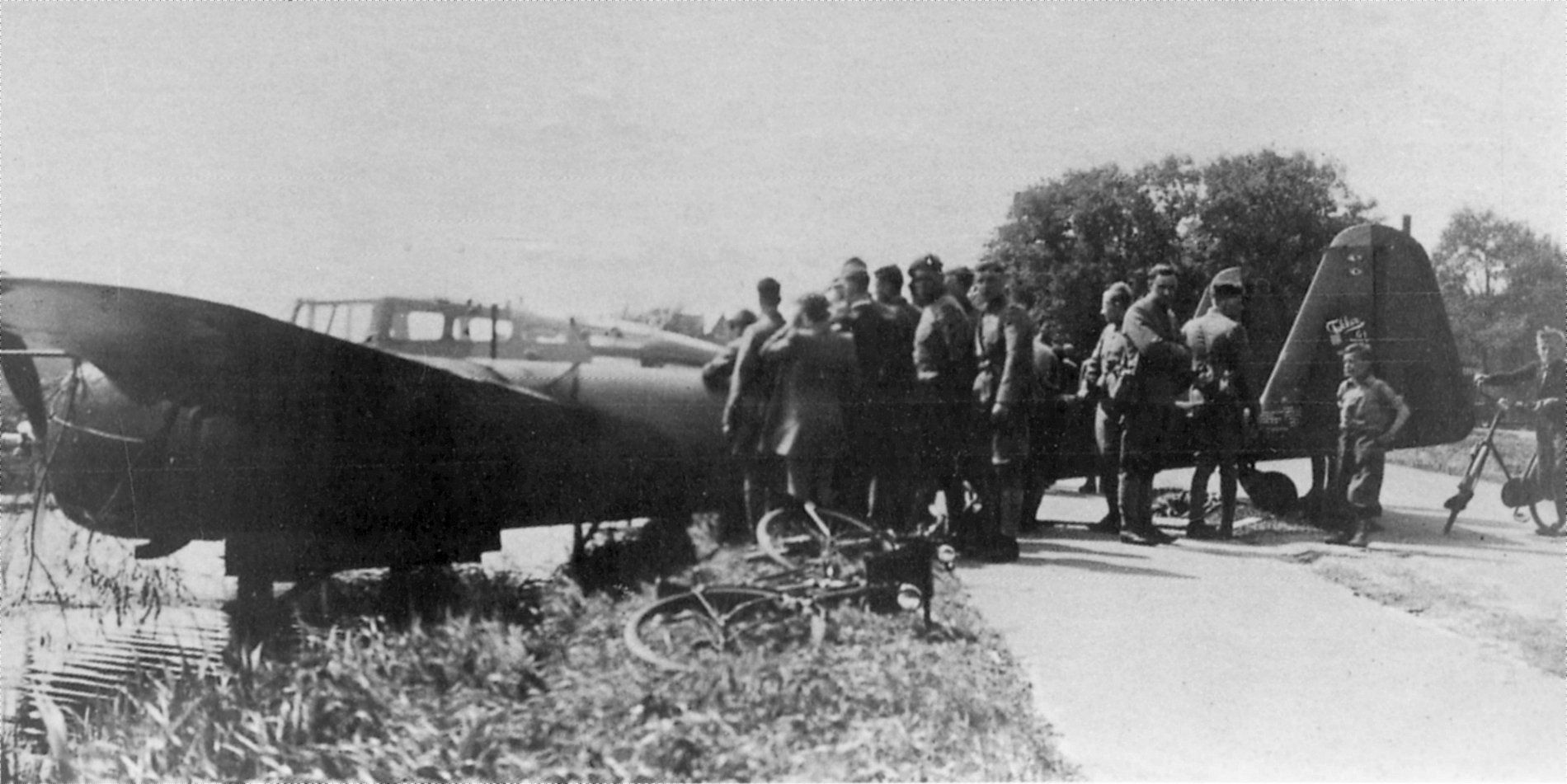
A photo of the 321 from the other side, where part of the registration is still visible. (see the numbers 21). Also clearly visible is the nose dome with the eight machine gun holes that lies on the other side of the water.
The aircraft will fall into German hands, as will the 318, which flies together with the 321 on May 13, 1940.
Both would later be reasonably restored and given a second life for the Luftwaffe.
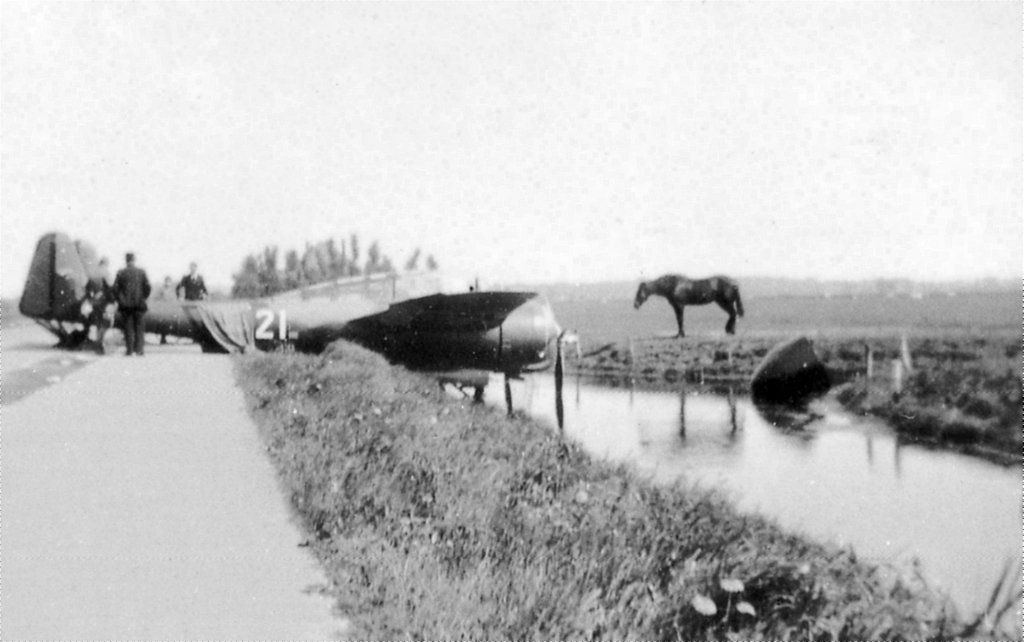
Attack on Moerdijk bridges
The 308 already stationed at Schiphol is accompanied by the 304 with pilot 2andLieutenant Pilot P. Schoute and air gunner Sergeant H. Lindner.
The two G.1's escort the last TV bomber, the 856, and depart from Schiphol at 05:20 hrs without escort from the D.XXI and the CX
The bombing of the Moerdijk bridges fails completely.
Eight German Bf 109s intercept the Dutch formation.
The heavy TV bomber crashes near Ridderkerk.
The entire crew is killed: Lieutenant-Pilot W. Anceaux Lnt.wnr. B. Swagerman, Sergeant-telegraphist A. Riemsdijk, Sergeant-Fl. O. Douwes Dekker and Soldier-Gunner J. Wijnstra.
The 308 with Sandberg and Van de Breemer survives the air battle and returns to Schiphol with a lot of damage around 06:00.
The 304, however, is riddled many times and eventually crashes in the Nieuw-Lekkerland polder.
Gunner Lindner managed to jump and landed seriously injured, where he died on the spot.
Pilot Schoute crashes in the 304 and is already dead.
At the end of the day, the 310, 315, 318 and 321 are actually ready for battle in Bergen.

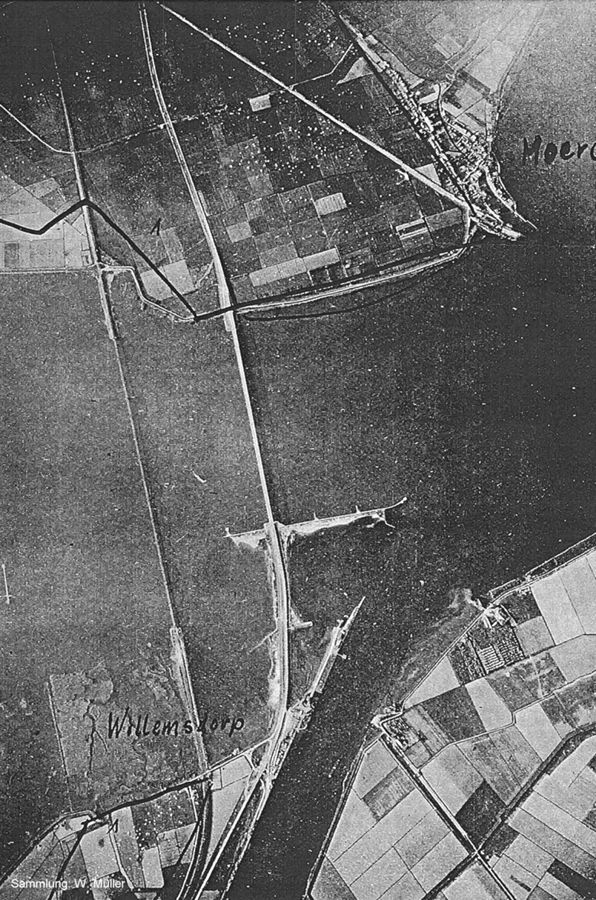
The G.1B is deployed
The G.1B – also known as the G.1 Wasp – was initially developed for export, including to Spain, but by the time the aircraft were ready, the Spanish Republic had already fallen. There was interest from Estonia for these aircraft, but due to the Dutch mobilization, the ten ready aircraft were kept in the Netherlands.
A hasty search is made for suitable armament to be able to take the aircraft into service. On 10 May 1940, four aircraft are finally able to participate in the fighting. The rest would fall into German hands undamaged.
On May 10, 1940, the G.1Bs were distributed as follows:
-The 341 was 50% ready at the Fokker factory;
-The 342, 343, and 346 were at Schiphol;
-The 344, 351, 353, 358, and the 359 were 70-90% ready at the Fokker factory;
-The 345 and 348 had flown over to Ockenburg Airfield on May 7;
-The 347, 349, 350, 352, 354, 355-357, and the 360, 361 were at Waalhaven;
-The 362, 363, and 364 were stored in an Amsterdam warehouse; the 365 was there only in parts.
Four G.1Bs have been delivered to Schiphol, the 342, 343 and the 346. These aircraft will go on a reconnaissance mission from 17:00.
They are flown by 2andLieutenant Pilot F. Droste 2andLieutenant-Aviator Vl. G. Steen and Sergeant C. Ottes with Sergeant J. Kentie and Sergeant J. Staal as gunners.
They land again at Schiphol at 7:00 PM.
Four machine guns were still fitted in the nose turret and a movable machine gun in the tail turret.
May 14, 1940
From this last day of the war onwards, our sources contradict each other considerably.
We have therefore opted for the most plausible course of events.
From 07:00 to 08:00 hours, reconnaissance flights are carried out from Schiphol by the G.1As, namely the 308 flown by A. Van Oorschot and Air Gunner W. Wesly and the 322 flown by H. Hartkoren and Air Gunner J. Van den Breemer.
The G.1B aircraft also come into action one more time, namely the 342, 343 and the 346 flown respectively by 2andLieutenant Pilot F. Droste and gunner Sergeant J. Kentie, by 2nd Lieutenant Pilot G Steen and gunner J. Staal and by Sergeant C. Ottes.
This action would have reached as far as Wijk bij Duurstede to provide cover for the retreating Army.
There are reports of more aircraft, including G.1A's and B's captured by the Germans. Therefore a number of G.1's do not count as war losses.
The 346 is probably the last G.1 that flew on May 14, at least in Dutch service.
The aircraft that were damaged at Bergen, returned to service with the Luftwaffe after repairs: 301, 315,321,332,
At Schiphol, the 342, 346 and 347 enter service with the Luftwaffe
See also:TH Leegstra took the plane and fled to England(The Time, May 6, '66).
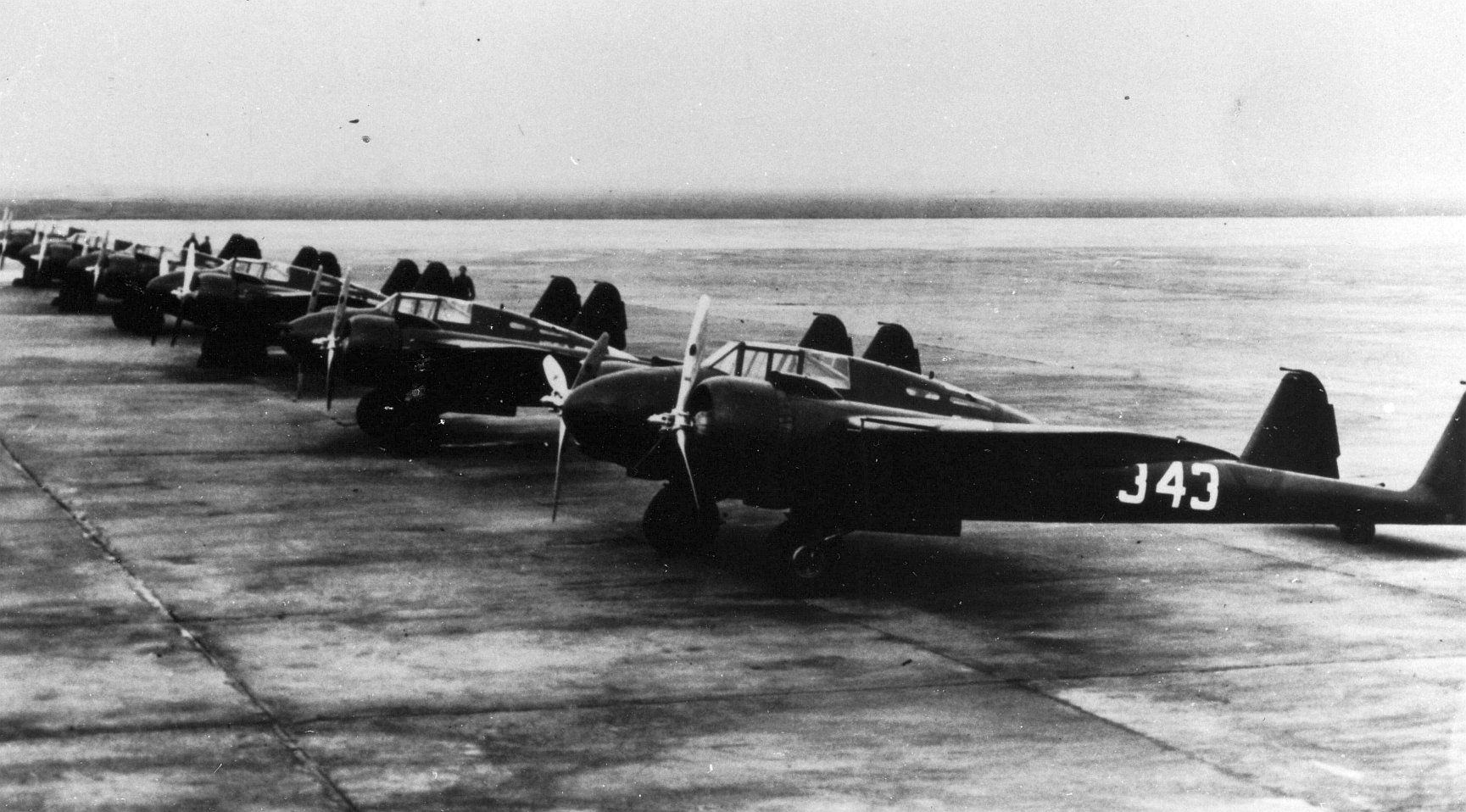
The fighter cruiser 315 c/n 5536 was delivered to the LVA on 25 July 1939. The aircraft had a more than average service record there and remained behind at Bergen.
Immediately after the capitulation, the Germans take the aircraft, together with the 321, under their wing. A group of Fokker employees and LVA mechanics are used for this purpose.
This group is already stationed at Bergen Air Park when the German invasion approaches. They manage to get the battered 315 ready to fly in the course of June 1940.
The Luftwaffe took over this G.1.
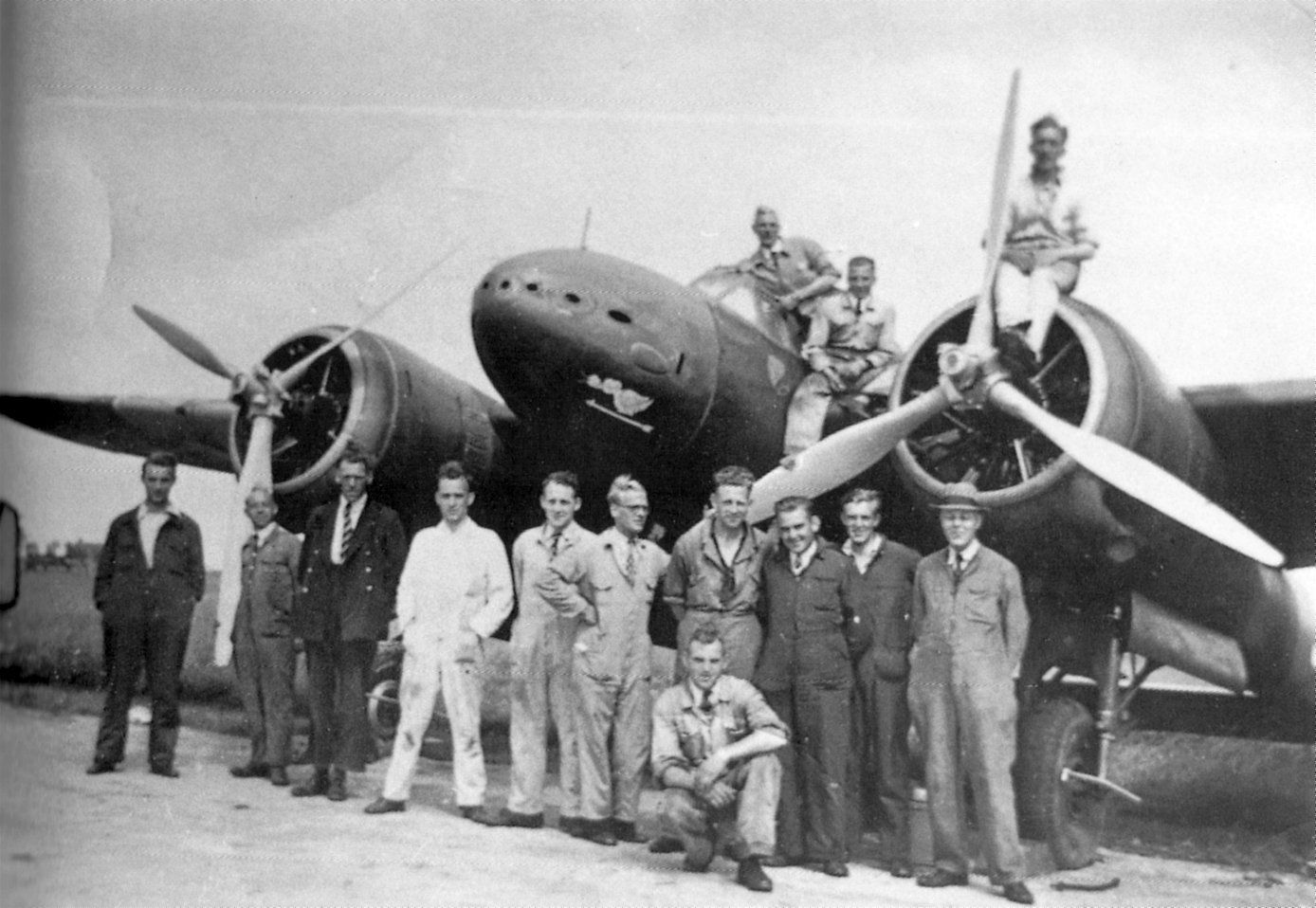
The fighter cruiser 321 c/n 5542, delivered to the LVA on 27 September 1939, also had a full agenda during the war days of May 1940.
The finale was the major action on 13 May with four CX reconnaissance aircraft, five D.XXI fighters and the G.1A 318.
The Germans deployed the remaining group of mechanics and technicians to repair the chassis of the 321.
In the second half of June 1940 the aircraft was ready and was deployed by the Luftwaffe.
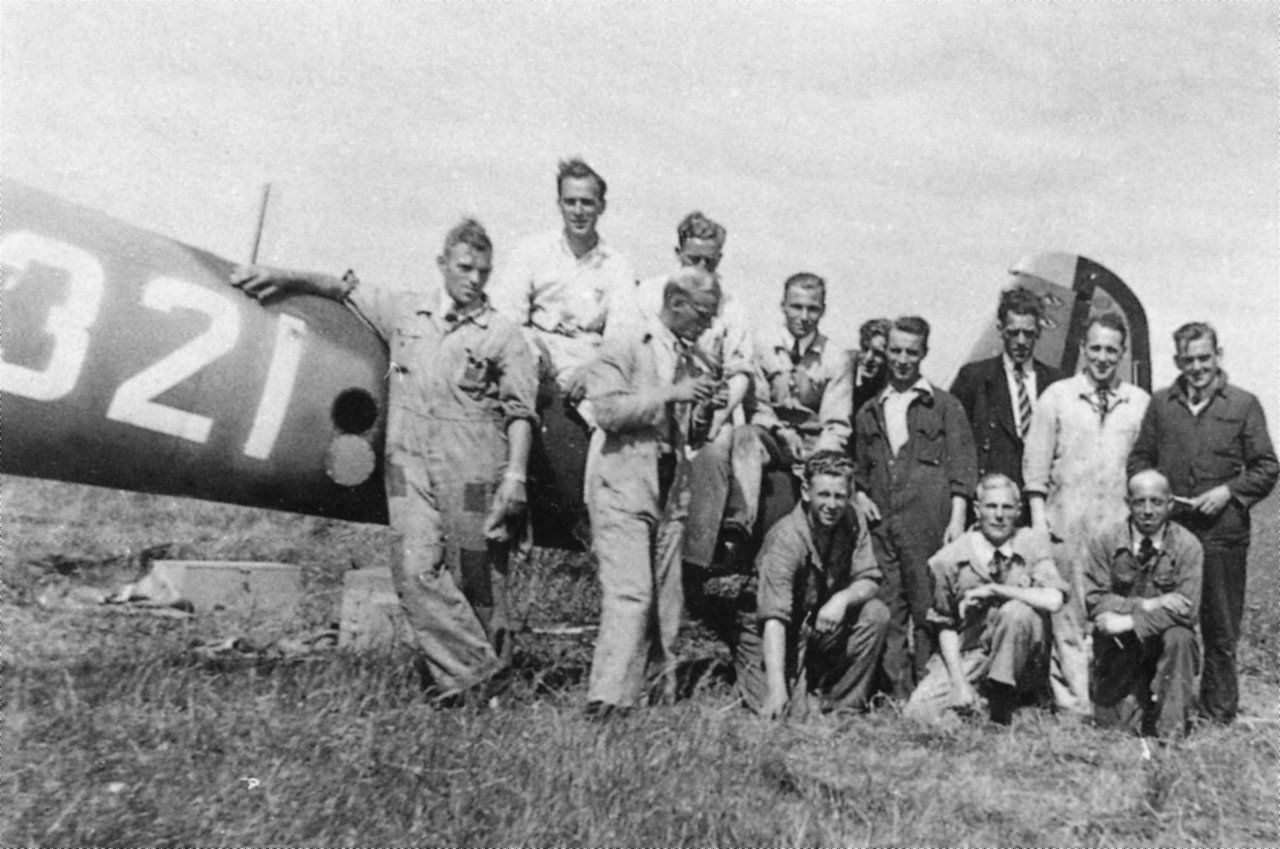
Another shot of the 321 of the LVA, which was also pushed into a canal near Bergen by LVA personnel to keep the aircraft out of German hands.
Once removed, recovery is underway promptly.
The names of the mechanics and other technicians are unknown to us. The rather tall man with a neat felt hat and the man in a slightly too short navy uniform are striking.
The Luftwaffe took over the fighter cruiser at the end of June 1940 for reconnaissance and training purposes.
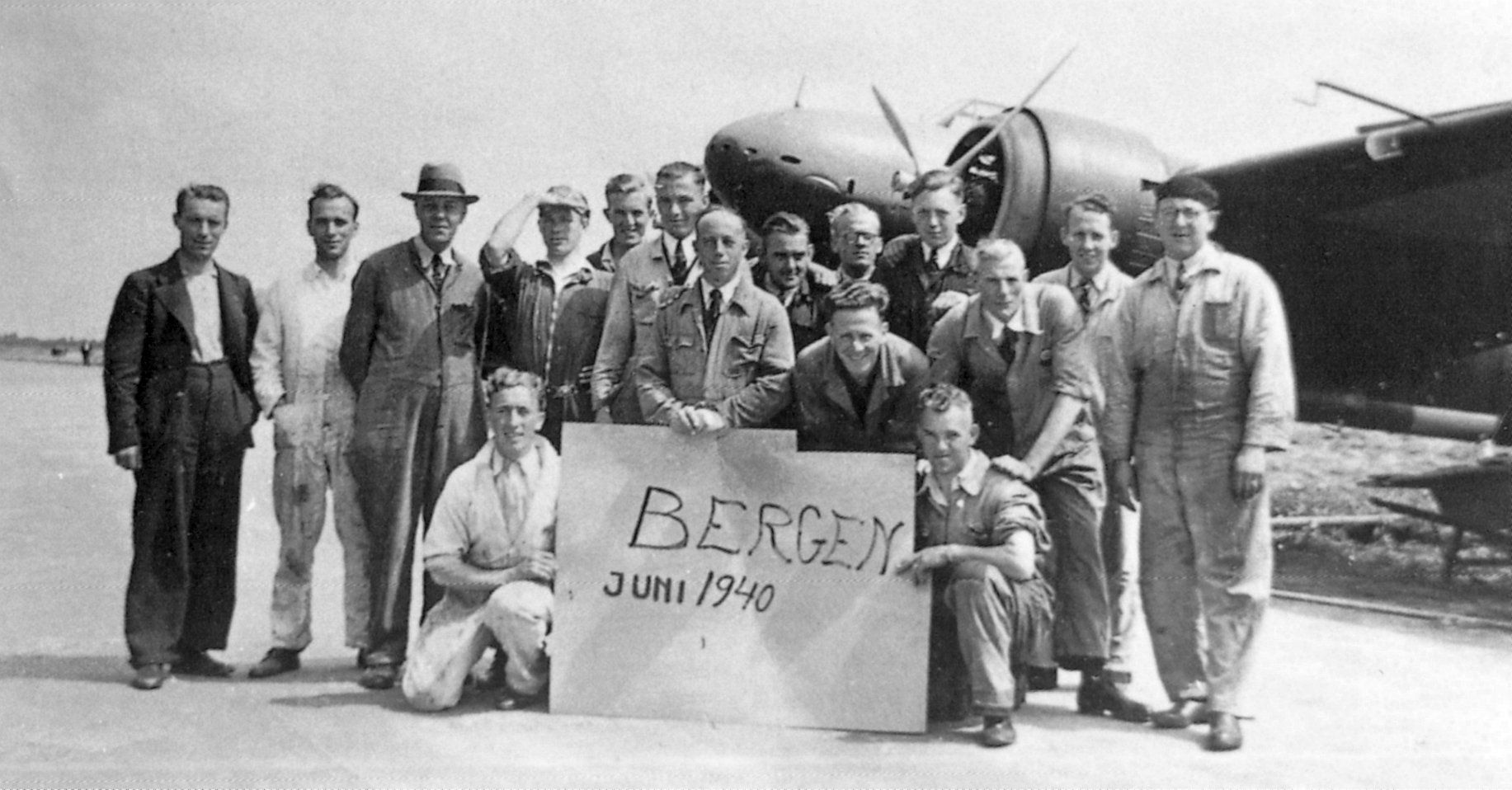
The end of Bergen air park
After the surrender of the Netherlands, the airfield fell into German hands on 15 May. It was prepared for reuse and expanded. Aircraft parking bays were constructed, shelters and bunkers in the northern part were built. The terrain was better drained and roads were built. In the autumn of 1940, the airfield was put back into use. In the period 1940-1944, Luftwaffe units 7, 8 and 9 of JagdGeschwader 54 flying Messerschmitt Bf 109Es and a flak group were stationed at Flugplatz Bergen.[2] Their tasks were regional air defence and escorting ships or convoys from the air. German bombers also occasionally used the airfield as an alternative airport.
On 4 May 1944 the airfield was bombed by allied aircraft because they could not reach their targets in Germany due to bad weather. After D-Day the airfield was made unusable by the Germans on 10 June 1944 due to fear of possible enemy landings.
As part of Operation Manna and Chowhound, the airfield became one of eleven Dutch food-dropping sites at the end of the war. In early May 1945, food was dropped from Allied aircraft here several times.
After the liberation, the airfield was no longer used. Many bunkers and other buildings were demolished. Little remains of the hangars, the rails of the roller doors in the concrete slabs of the platforms are still present. A few former German bunkers, locally known as the bunker village and roads, are still reminiscent of the occupation. The old pumping station is still completely present. In the 1950s, the site was given a mobilization destination for the Royal Netherlands Army and a small part of the area was occasionally used by the National Reserve Corps.
In 2013, the site was purchased by the initiators of Ecodorp Bergen. They want to establish a sustainable, ecological living and working community there. Since 2016, a museum has been located on the site, consisting of the former command bunker and a smaller connection bunker.
Source: Wikipedia
Museum website: https://vliegveldbergen.webs.com/
